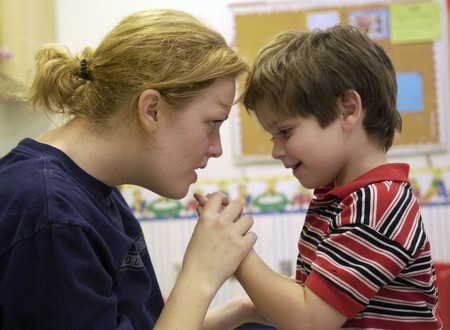Autistic children have difficulties forming relationships with other people. They seem to be cut off, living in a world of their own. Although the condition was first identified in the eighteenth century, it was not until 1943 that American psychiatrist Leo Kanner called it “early infantile autism” (from the Greek word autos meaning “self”). Kanner used this term because of the autistic child’s withdrawn behavior and disinterest in others.
Statistics confirm that approximately four or five children per 10,000 have classic autism, and approximately fifteen to twenty per 10,000 have autistic-like features. Autism—the cause of which is unknown—affects four times as many boys as it does girls.
Experts on autism emphasize that the condition affects the child’s whole system of communication. A typical autistic baby doesn’t show awareness of her mother’s presence, screams constantly unless rocked rhythmically all the time, and doesn’t look at the world around her; at the toddler stage, the autistic child appears not to understand the meaning of speech, and is late learning to talk. Secondary problems usually develop, such as resistance to change (routine becomes very important), absence of imaginative play, socially difficult behavior (destructive, aggressive actions), and learning disabilities. Many parents of autistic children think their child is potentially intelligent, if only she could communicate with them.
Some autistic children make no progress at all and remain withdrawn all their lives. The majority show some improvement, however, especially between the ages of six and twelve years, but only 15 percent are able to lead an independent life in adulthood.
In recent years, new treatments aimed at helping autistic children have been developed (for example: holding therapy, in which an adult hugs the child tightly during a distressed outburst; aural training, which uses the Tomatis method of ear and voice instruction and practice; neuro-feedback training, which uses monitoring of brain-wave patterns; or daily life therapy, pioneered in Tokyo, which relies heavily on group dynamics, modeling, and physical activity). While it is generally agreed that early intervention is best, the effectiveness of these programs has still to be evaluated properly and may vary according to the needs, personal and community resources, and, unfortunately, finances of each autistic individual and her family.
